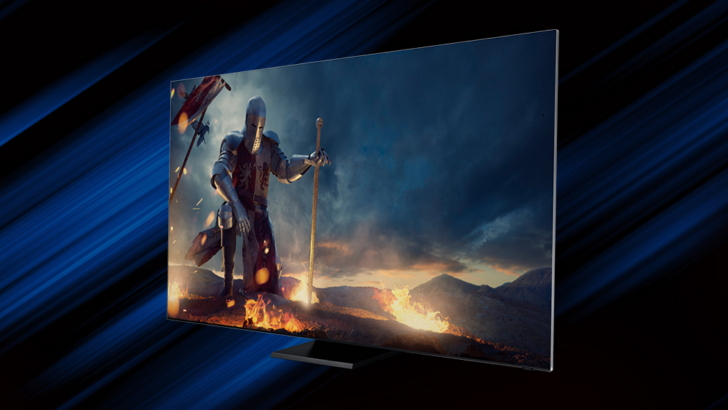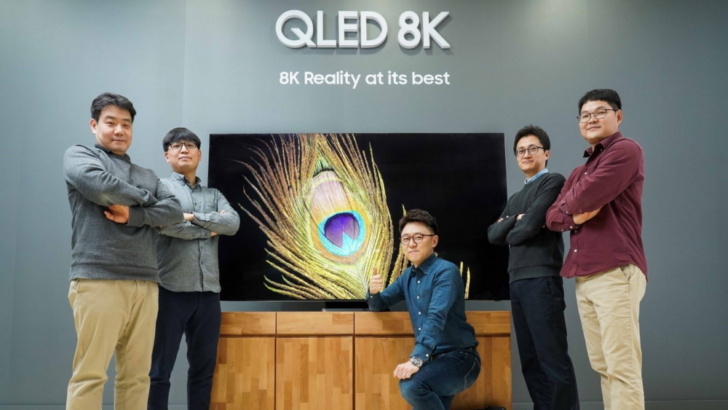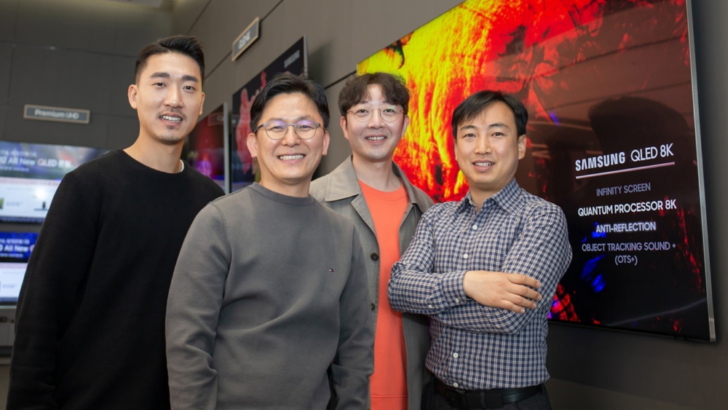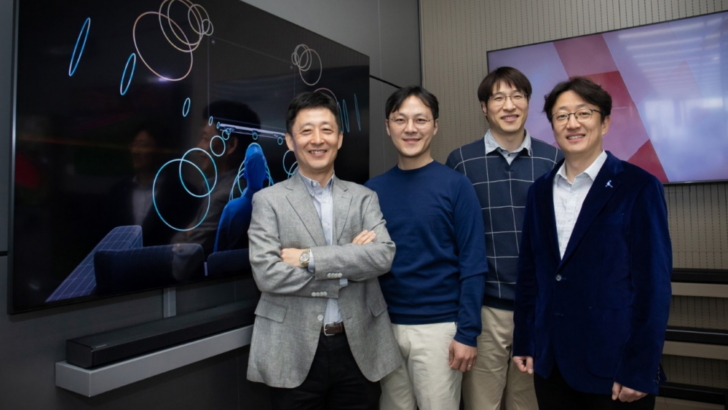[Interview] Experts Explain How Samsung Optimized QLED TVs for Next-Level Gaming
on June 18, 2020

Members of Samsung Electronics’ Visual Display Division (from left): Hyun Mook Choi and Jessica BeomEun Kim, from the TV Product Planning Group, Sungchang Jang, from the Software R&D Group, and Youngho Jung, from the Panel R&D Group.
Since introducing Auto Game Mode to its TVs back in 2018, Samsung has made delivering next-level gaming experiences a key priority for TV development. Today, the fruits of the company’s considerable efforts include three consecutive ‘Best of Innovation’ nods in the gaming category of CES’s annual Innovation Awards.
Samsung’s latest QLED TVs build on that award-winning heritage by offering users their most immersive and enjoyable TV gaming experiences yet. To learn more about how QLED TVs are changing the game in this regard, Samsung Newsroom sat down with the product planners and developers who helped bring the displays to life.
More Immersion, Less Distractions

When it comes to fostering immersive gaming, one of the most important factors, the team explained, is what’s known as input lag – or the amount of time between the moment a command is entered on a controller and the moment it’s registered on the screen. The shorter the input lag is, the more immersive the gameplay becomes.
“Input lag is determined by how quickly image signal can be processed and displayed on the screen,” said product planner Jessica BeomEun Kim. Samsung’s team was able to minimize QLED TV’s input lag, Kim continued, “by enhancing the way the TV processes image signal, which consequently reduces video processing time.”

On QLED TVs, racing games – known for being graphics heavy, and for boasting lightning-fast gameplay – run smoothly, without screen freezes or delays. As developer Youngho Jung explained, FreeSync™ Premium, a technology that eliminates screen tearing and stuttering enabled this ability to seamlessly manage graphics-heavy games. Also, Game Motion Plus, which minimizes motion blur and halo effects helps smoother gameplay. “We prevented the screen from becoming distorted by syncing the performance of the graphics card with the output of the display,” said Jung.

Spotting enemies and objects in the dark is easy with QLED TV’s built-in Dynamic Black Equalizer. This innovative technology utilizes the TV’s AI Quantum Processor to enhance image quality in real time by analyzing a game’s dark scenes and detecting objects within them. It then optimizes black levels to help you see things that weren’t so clear before.
Gaming-Specific Features
QLED TVs also include a number of built-in gaming-specific features that make it easier for gamers to immerse themselves in the action.

Take for instance Multi View, a screen-splitting function that allows users to simultaneously game on one side of their screen and mirror videos from their phone on the other. The ability to game and watch a favorite streamer on a single screen eliminates the inconvenience of having to switch back and forth from focusing on your TV to focusing on your phone. The function can even detect when your phone has switched to landscape mode, and reflects this adjustment in real time.

Auto Game Mode is another clever built-in function that enables QLED TVs to automatically analyze connected devices and optimize settings accordingly. All you have to do is simply connect your console to your TV, and a “game mode is turned on” message will automatically pop up on your screen. The idea behind including this notification, Kim explained, was to emphasize that the TVs “transform into a gaming device the moment they’re connected to a console.”

Sound is another critical element that can make or break your gaming experience. Not only can realistic audio make games more fun, it can also mean the difference between victory and defeat. To allow users to enjoy the most realistic sound experience possible, Samsung packed its newest QLED TVs with a total of six speakers – two more than previous models. Built-in Object Tracking Sound (OTS) technology enhances gamers’ immersion by allowing them to sense where sounds are coming from and how far away they are.
QLED TV + Gaming: A Winning Combination
Once a simple display, the TV has evolved into the center of home entertainment, and a hub for users to engage in a wide range of fun and interactive experiences. As Software engineer Sungchang Jang, explained, the team went to great lengths to ensure that Samsung’s 2020 QLED TVs would offer gamers the most entertaining experiences imaginable.
“It was crucial that our 2020 QLED TVs would be able to work perfectly with any gaming devices that consumers might use,” said Jang. “This required us to develop entirely new technology. We had to test each and every gaming device we could find individually in order to ensure that they worked well with the TV. There was a lot of trial and error, but in the end, thanks to our team’s tremendous efforts, we managed to pull it off.”
To get a better sense of the kinds of features gamers want in a TV, the product planning team used MOSAIC, Samsung’s company-wide intelligence platform, to source suggestions from some 15,000 Samsung employees.
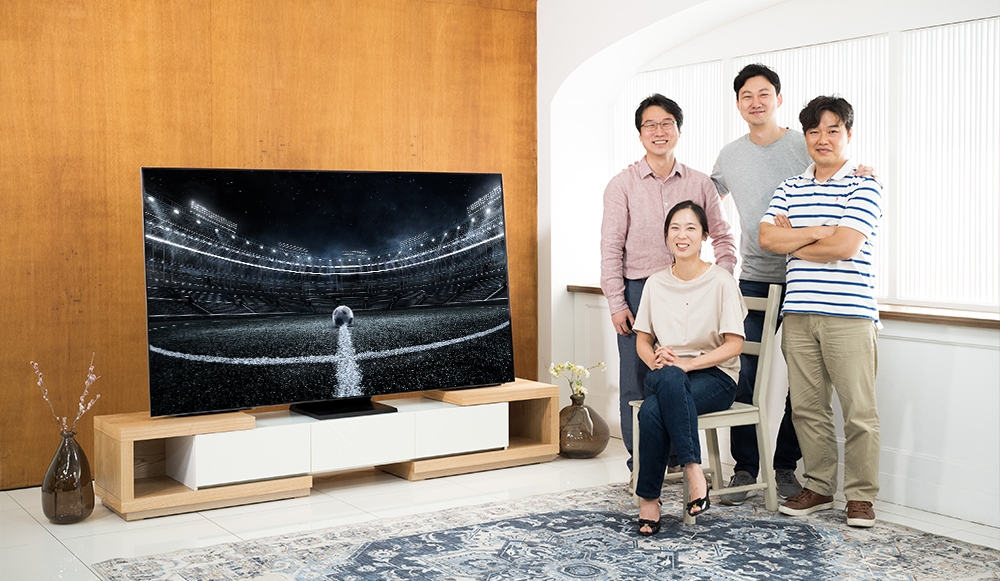
Looking ahead, the team members believe that TVs will continue to serve as the center of home entertainment, and will be recognized as bona fide gaming devices. “Going forward,” added the product planner Hyun Mook Choi, “we’ll continue to enhance our TVs’ gaming features, to offer gamers the most complete and satisfying gaming experience possible.”
*Images on screens are simulated.
